Too many banks and CUs (lending institutions) can't tell the difference between good profits and bad. The consequences are disastrous. Bad profits choke off an organization’s best opportunities for true, lasting growth. They make it vulnerable to competitors. Capital is a scarce resource and management needs to place it in the areas that add most value – those that exceed ‘hurdle’ by the greatest amount.
As shareholders and debtholders have fundamentally different perspectives – the former being interested in the return on their investment, the latter only on getting their investment back – it is an error to blindly mix and match approaches from both views. Shareholders are interested in their investment compensating them for the risk that they incur (‘risk’ being considered the volatility of their returns). The shareholder view is thus primarily concerned with the return on capital, rather than the actual amount of capital held. Furthermore, because shareholders can diversify specific risk (related to a lending institution’s portfolio), they are mainly interested in systematic risk and hence measure against the market portfolio.
Conversely, a debtholder’s main concern is of receiving the principal back at maturity. Hence, they are primarily interested in downside risk (specific to an institution). ‘Risk’, to a debtholder, is thus considered the likelihood of a specific point in the tail being breached (an extreme downside). To the debtholder therefore, it is the amount of capital, rather than the return on this capital that is of major interest. The likelihood of ‘default’ is specific to the particular lending institution, and therefore is measured against the lending book. Hence the debtholder is very much interested in the internal risk measures at an institution.
The question then becomes how can lending institutions converge the two worlds of safety and return?
Debtholders are interested in the amount of capital held as it is the cushion between them and the firm defaulting on their promise to repay. The debtholders require a risk premium that is a function of the risk of default (an important driver of which is the ‘thickness’ of the capital cushion). Although their primary concern is that they are receiving a sufficient return on their investment, they realize that an institution cannot be maximizing the shareholder value if it is exposed to significant financial distress costs.
Shareholders demand a return on their investment that compensates them for the risks that they face. If they perceive that they are not receiving this return, they will sell the stock and the market value of a firm will fall. Hence management need to know that they are generating a sufficient return for their shareholders (and if possible, exceeding the required return).
Beta provides the market’s view of the relative risk of that institution and hence the required return can be calculated using Capital Asset Pricing Model (CAPM).
Using the return promised to debtholders and CAPM as a proxy for the return expected by shareholders, we can develop a group level expected performance benchmark, commonly referred to as hurdle rate.
In the shareholder world, the charge for risk is given by beta multiplied by the market risk premium. Beta can be thought of as the amount of risk – viewed against the market portfolio – and the market risk premium as the unit cost of that risk. The market risk premium is a constant – at any level, for any business.
In a debtholders world, more capital is required by a ‘risky’ venture (i.e., with a higher chance of extreme downside) than a less ‘risky’ one if both are calibrated to the same probability of default. Therefore, economic capital reflects the amount of risk – viewed against the bank portfolio. It stands to reason that the unit cost for the risk should be constant – i.e., that the same hurdle rate should be applied throughout an institution.
While, bad profits come from pricing below hurdle rate. Good profits are dramatically different. A lending institution earns good profits when the return on risk adjusted capital is above the hurdle rate.
As an aid to solving the question of the most appropriate route to take there seem to be a number of fundamental questions that need to be answered. As there is no theoretically ‘correct’ answer, the answers to these questions will likely differ from institution to institution, and hence will require answering for each specific case.
- Who do we care about and to what extent, shareholders / debtholders / regulators / a combination?
- What are we trying to do, i.e., calculate a charge for ‘risk’, maximize returns based on consumption of capital?
- How can we calculate a charge for ‘risk’?
- At what level are we trying to do it and why, i.e., aggregate vs. business unit vs. transaction-level
Issues surrounding the different perspectives of managing and optimizing risk-return tradeoffs need to be added to the the boardroom agendas and also socialized with key players to assess their respective performance.
